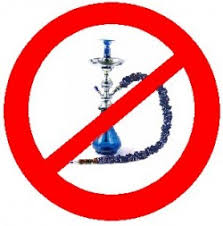Tobacco can be used in many different forms – but all are linked to cancer. There is no safe way to use tobacco.
Other tobacco products aren’t safer than cigarettes
Tobacco can be used in many different forms – but all are linked to cancer. There is no safe way to use tobacco.
Cigars and pipes are known to increase the risk of many cancer types including lung, mouth and upper throat, food pipe (oesophagus), voice box (larynx) and stomach. Smoking these products is just as bad for you as smoking cigarettes.
Roll-up tobacco contains the same cancer-causing chemicals as manufactured cigarettes. Roll-up cigarettes aren’t any safer than regular cigarettes
Smoking bidis, the most common form of tobacco in South Asian communities, also causes the same types of cancer as other tobacco products such as cigars.
Does smokeless tobacco increase cancer risk?
Smokeless tobacco includes a wide variety of products which can be used in different ways, chewed (‘dry chewing tobacco’), sucked (‘moist oral tobacco’) or inhaled (‘nasal snuff’). Scientists have shown that many forms of smokeless tobacco increase your risk of mouth, oesophageal (food pipe) and pancreatic cancers.
Most smokeless tobacco products in the UK are used by South Asian communities. In these communities, dry chewing tobacco is often used as part of a ‘betel quid’ or ‘paan’. These consist of a mixture of betel nut (or areca nut), slaked lime and various herbs and spices, wrapped in a betel leaf.
Betel nut itself can cause cancer, so chewing betel quids can cause mouth cancer even if no tobacco is added.
Most types of smokeless tobacco contains at least 28 different chemicals that can cause cancer. Smokeless tobacco users can be exposed to similar, if not higher, levels of cancer-causing tobacco-specific nitrosamines (TSNAs) and nicotine than cigarette smokers. So, like cigarettes, smokeless tobacco is both dangerous and highly addictive.
Does shisha increase cancer risk?
Many people think shisha is harmless but this is not the case – shisha contains tobacco. Shisha, also called hookah or waterpipe, smokers inhale flavoured tobacco through a long pipe attached to a water bowl. Shisha smokers still inhale toxic cancer-causing chemicals and addictive nicotine.
A shisha pipe
Unlike cigarettes, shisha is burnt using charcoal so users can also be exposed to dangerously high levels of the poisonous gas carbon monoxide. Levels of carbon monoxide in the body from smoking shisha can be up to 17 times higher than from cigarettes and can cause carbon monoxide poisoning.
Looking at all the evidence together suggests that smoking shisha could at least double your risk of lung cancer and may be linked to some other cancer types.
Does snus increase cancer risk?
Snus is a popular type of smokeless tobacco used in Sweden and Norway. It is banned in most other countries in the EU. Snus is manufactured using a special process that considerably lowers the levels of TSNAs in the finished product. Because of this, snus may be less dangerous than other types of tobacco.
But it still contains these cancer-causing chemicals at a low level.The evidence is currently unclear, but snus use has been linked to pancreatic and oesophageal cancer, although not mouth or lung cancer. A recent study that looked at pancreatic cancer and snus showed no association, but the paper had limitations, and more research is needed to establish if there is a link.
